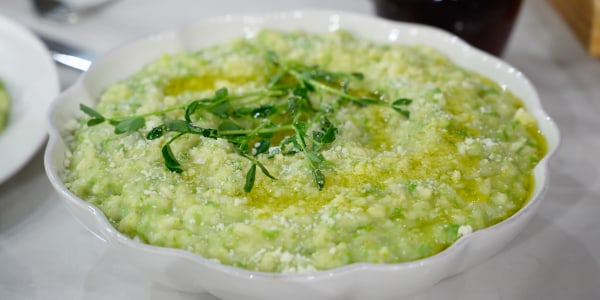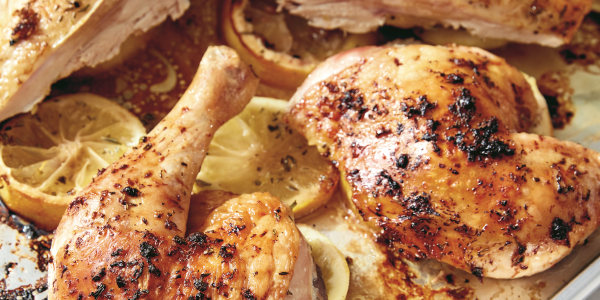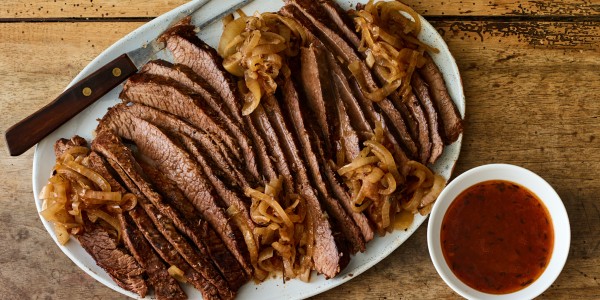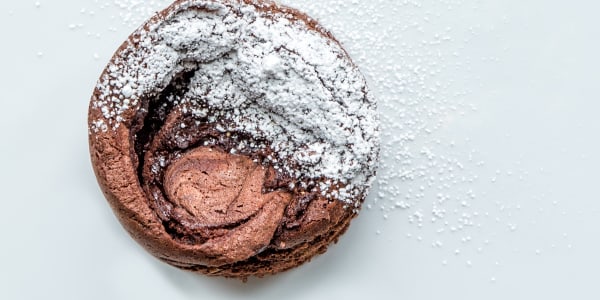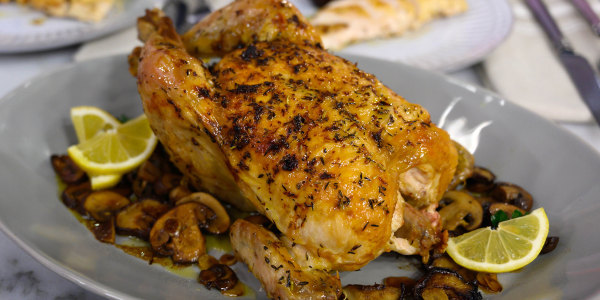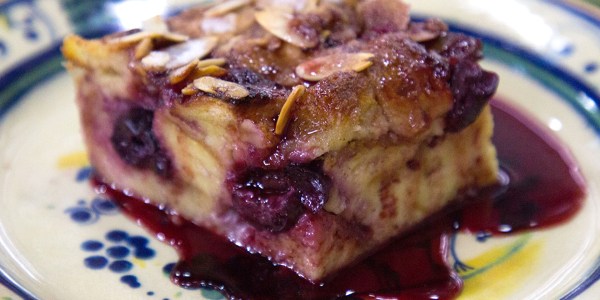Has a term you didn't know ever stopped you from trying out a new recipe? When it comes to cooking, there are plenty of methods the average home chef may be unfamiliar with, but that doesn't mean you should shy away from more complicated dishes and desserts. We consulted some of the top experts at cooking schools across the country to help define some of the more elusive culinary terms so you can mince, dice and fold it in like a pro.
Chef Lance Nitahara, assistant professor of Culinary Arts at the Culinary Institute of America in Hyde Park, New York told TODAY Food that since many people now get their cooking instruction from outside sources such as YouTube videos, it can be really helpful to have a basic knowledge of some culinary terms. "Understanding the terminology for techniques used can lead to a better understanding of the technical aspect of cooking through communication," he said.
Here are some of the cooking terms that may trip you up when you see them in a recipe:
Scant
"This one is rarely used in the industry," said Nitahara. "It describes a measurement that just barely fills the volume measure that it describes. For instance, a 'scant cup' would be just under the top of the cup measure, rather than level or heaping over." Scant can also sometimes be used to describe a measurement of dry items that could be packed down, but are not, for example, a cup of unpacked brown sugar.
Sweat
"Sweating means to cook something without giving it any color," Frank Proto, director of culinary operations at the Institute of Culinary Education told TODAY. "This is mostly done with vegetables and aromatics, when you want to bring out some of the moisture by cooking it over low to medium heat with a little fat." For example, when making risotto, you sweat out the onions to cook them but you don’t want them to get any color.
Try it in:
Zest
"Zest of a citrus fruit is the brightly colored outer covering of the fruit's peel, also known as the flavedo of the fruit," said Nitahara. "The zest of the fruit does not include the white pith that lies just beneath it, and recipes calling for zest generally do not include the pith as it is bitter and astringent." Citrus zest is intensely aromatic, but has very little flavor, and this is due to the essential oils that are encased in the cells of the zest. Zest can be used to add flavor and aroma to desserts, sauces or meats. "I often use them to boost the flavor and aroma of orange juice-glazed beets," said Nitahara.
Try it in:
Julienne
"A classic julienne is a vegetable cut that measures 1/8" x 1/8" x 1" to 2"," said Nitahara. "This is roughly about the same size as a matchstick." A julienne cut can also be described as a non-precision thin, longer cut of an item, such as thinly cut carrot sticks for a salad.
Bouquet garni
"This is a bundle of herbs tied with twine used to flavor soups, stocks and stews," said Proto. "Tying the herbs together before adding them makes it easier to fish them out when you’re done cooking." You can use any herbs in a bouquet garni, but a basic one might include a bay leaf, parsley stems and thyme.
Try it in:
Deglaze
"Deglazing is when you add liquid to a pot or pan that was used to brown meat or vegetables, in order to lift the fond — little caramelized bits and juices — from the bottom of the pan," said Proto. "I always tell my students that the fond contains a lot of flavor, so we use deglazing to loosen the fond from the pan and stir it into the liquid — often making a sauce for the dish." Make sure not to let the fond burn or it will develop a bitter taste.
Try it in:
Fold
"Folding is more commonly used in pastry applications, when you’re combining two items of different weight together without beating the air out," said Proto. "For example, when you make soufflé you need to mix the egg whites into the heavy base while keeping them aerated. Take the spatula and scrape it along the side of the bowl closest to your body, then as it reaches the curve, flip it over and gently glide the spatula back over the mixture in the opposite direction. Continue folding until the items are mixed." Proto said that you want to avoid vigorously stirring in erratic directions which will beat the air out.
Try it in:
Reduce
"Reduction is the application of heat to a liquid to cause it to simmer or boil until some, or all, of the water in the liquid has evaporated," said Nitahara. "This will cause the liquid to become more intense in flavor, color and aroma, and it may also thicken the liquid if the liquid contains starch, gelatin, fiber or other thickening agents."
Truss
"Trussing is the tying of an item with butcher's twine to prepare it for cooking," said Nitahara. "This is most often used on meat roasts or whole poultry. Trussing achieves two things: first, it shapes the item for presentation after cooking. It also allows the item to cook more evenly." If an item is untrussed, the thinner parts of it will overcook by the time the thicker parts are cooked to doneness, so trussing can create an even, more uniform shape to prevent that from happening.
Try it in:
Blanch
"Blanching is when you place food into boiling water for a short period of time and then plunge it into an ice water bath to stop the cooking process,' said Proto. "This is typically done with fruits and vegetables." Blanching reduces the final cooking time so it’s usually not the final step of the cooking process. This cooking technique preserves a food’s color, kills enzymes in food and makes it easier to remove the skin of some foods like tomatoes and peaches.
Mince
"Mincing is the rapid chopping of a food item by rocking the curved part of the knife back and forth over the item being minced," said Nitahara. "This results in a finely cut item to use for fillings or garnishes." Items you typically mince include onions, garlic, shallots or other aromatics.
Rough chop
"Rough chopping an item is briefly cutting an item into relatively even sized pieces with little regard to uniformity of shape," said Nitahara. "This is often done with foods that are not going to be highlighted as a visual garnish, rather cooked down into a sauce or a flavor enhancement."
Dice
"A classic small dice is an item cut to the dimensions of 1/4" x 1/4" x 1/4"," said Nitahara. "A classic medium dice is cut into the dimensions of 1/2" x 1/2" x 1/2"."
Water bath
"If you’re doing any large-scale cooking, water baths can be used to keep food warm," said Proto. "To do this, fill an oven tray with water and place it at the back of the stove, then place food into smaller trays and rest them side by side over the water bath to keep them warm." Another application for water baths is when you’re making custards, soufflés and crème brulees. "When baking, a water bath will provide insulation so they cook slower and more evenly," said Proto.
"The steam from a water bath or double boiler can also be used to gently cook egg yolks without scrambling them to make the classic Hollandaise sauce," said Nitahara.
Try it in:
Knowing these culinary terms can making executing the next recipe that catches your eye a whole lot easier, but if you forget any of them or come across another word that's unfamiliar, don't sweat it.
"When I am at home cooking for loved ones, no one is going to notice whether or not I've cut my juliennes a quarter inch longer than the classic technique demands," said Chef Nitahara. "A thin, long slice of carrot will definitely suffice."
Nitahara said that it's important to remember that the ability to cook doesn't just come from the brain, it comes from the heart.
"Precision measurements may be crucial in a restaurant, but at home, it’s more important to make sure the food tastes good, and we can only do that if we are truly enjoying the process," he said. "The sages of past generations have been cooking that way for their families for years. I don't think my grandma even owned measuring spoons, much less a ruler to measure her vegetable cuts."
Related:
